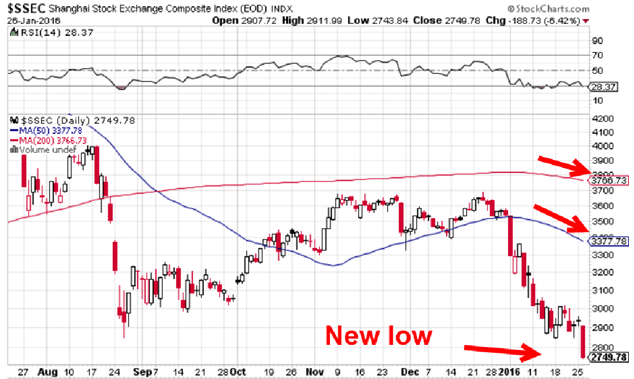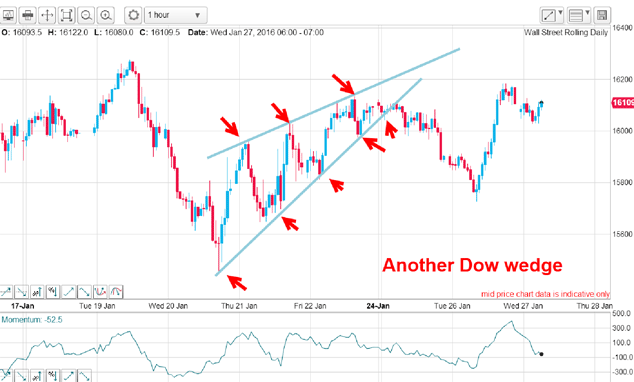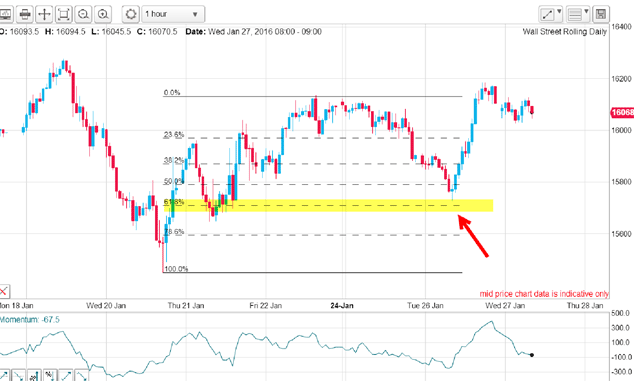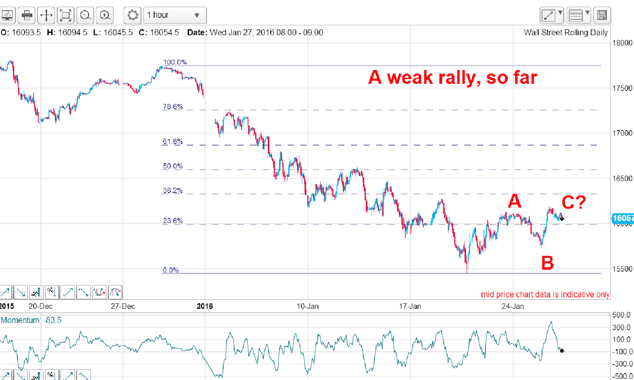The Dow and FTSE are now a trader's dream markets
The herding mentality has taken over the markets, says John C Burford. Chart-following swing traders will be lining up to profit.
On Friday I wrote: "Stockmarkets are at a critical juncture. If they don't start a counter-trend rally soon, more severe declines lie ahead. But I have a clue that such a rally is imminent."
This week, although stockmarkets have been volatile, they have edged higher.
Traders who believe the fundamentals make the markets must have been scratching their heads at this performance.
MoneyWeek
Subscribe to MoneyWeek today and get your first six magazine issues absolutely FREE

Sign up to Money Morning
Don't miss the latest investment and personal finances news, market analysis, plus money-saving tips with our free twice-daily newsletter
Don't miss the latest investment and personal finances news, market analysis, plus money-saving tips with our free twice-daily newsletter
On Tuesday morning, we were greeted by the news that the Shanghai index had plunged by over 6% overnight. Here is the chart:

It certainly looks as if China is falling off a cliff (again) with both the 50-day and 200-day moving averages accelerating downwards. That is one bearish-looking chart.
Although the US markets did open a little lower on the back of the China move, it did stablilise at an important Fibonacci support level and then moved sharply higher.
Here is the hourly Dow:

Recall I had taken a tidy profit last week based on Fibonacci levels. And here was another terrific opportunity. The rally into Friday's high at the 16,135 level was in the familiar form of a wedge. Remember, I love trading wedges.
In fact, this wedge is a textbook example with multiple very accurate touch points. Friday's high lay smack on the upper line and that was the place I entered a low-risk short trade. Note that I am only interested in trading when I have a low-risk opportunity. I want the odds of success very much on my side.
Here, I placed my protective stop just above the upper wedge line, because if the market did rally to take me out, that would very likely negate the wedge pattern and the path of least resistance would not be down. Remember, all we can do in real time is make an educated guess with incomplete information as to the next move. Sometimes our guesses are wrong (that is why stop losses were invented) and sometimes they are right.
But the wedge once again heralded a decline when the lower wedge line was broken on Monday (another valid short entry signal).
How far could I expect the decline to carry? In an ideal world, markets often retrace the entire span of the wedge from its start in this case the 15,450 area. But not always!
One clue that strength was coming into the market was given me when I had the chance to employ the 'magazine cover indicator' (MCI). This is a close cousin of my 'headline indicator'. The MCI is useful when a prominent magazine splashes a certain story on its cover.
That veritable stalwart of the UK investment media, Investors Chronicle, last week this was their cover story: " Spotting Sell Signals how to profit from short selling".
In the article, it is explained how the average investor can profit from a variety of strategies which benefit when share prices decline. I have noted over the years that when such a radical idea appears on the front cover of a major magazine, the trend is about to change.
Have you ever seen such an article advising shorting when shares are making all-time highs (when such advice would be genuinely useful)? I thought not.
No, they only appear when a trend has been in place for a while and with the FTSE having entered official bear market territory' of a 20% decline, the editors were simply succumbing to the herd mentality. Now everyone knows' stocks are in a bear market and bear market stories are now selling like hotcakes. You couldn't give them away last year!
Now their readership is short selling, this is the ideal time for a huge rally to take them out. The market's cruelty is almost beautiful to observe.
Back to my trade and now that the average punter is much more bearish I reckon that the decline will likely not reach the start of the wedge. Where will it likely turn? Of course, at the Fibonacci 62% retrace:

Sure enough, the market came within a few pips of hitting the 62% level before turning sharply higher. That was the place to take the profit of around 350 pips on my short.
It was also the place to reverse and go long! The market had hit the regulation Fibonacci 62% support and was bouncing hard upwards. If you were in front of your screen yesterday, you couldn't help but be impressed by the relentless rally which has now taken the market a little above the Friday wedge high.
In fact, the FTSE showed a very similar pattern but the decline was stopped right at the higher Fibonacci 50% level which was likewise at a buying area.
So now let's look at the bigger Dow picture. Here is the hourly chart showing the down move off the December high:

The relief rally now has the required complete A-B-C form, but the C wave has not yet reached even the Fibonacci 38% level. This is still a weak relief rally, so far.
Unless the rally can gird up its loins soon, the downtrend should resume and present another great trade opportunity. But if it pushes on to the Fibonacci 38% level, that may give me another trade signal.
Get the latest financial news, insights and expert analysis from our award-winning MoneyWeek team, to help you understand what really matters when it comes to your finances.
John is is a British-born lapsed PhD physicist, who previously worked for Nasa on the Mars exploration team. He is a former commodity trading advisor with the US Commodities Futures Trading Commission, and worked in a boutique futures house in California in the 1980s.
He was a partner in one of the first futures newsletter advisory services, based in Washington DC, specialising in pork bellies and currencies. John is primarily a chart-reading trader, having cut his trading teeth in the days before PCs.
As well as his work in the financial world, he has launched, run and sold several 'real' businesses producing 'real' products.

